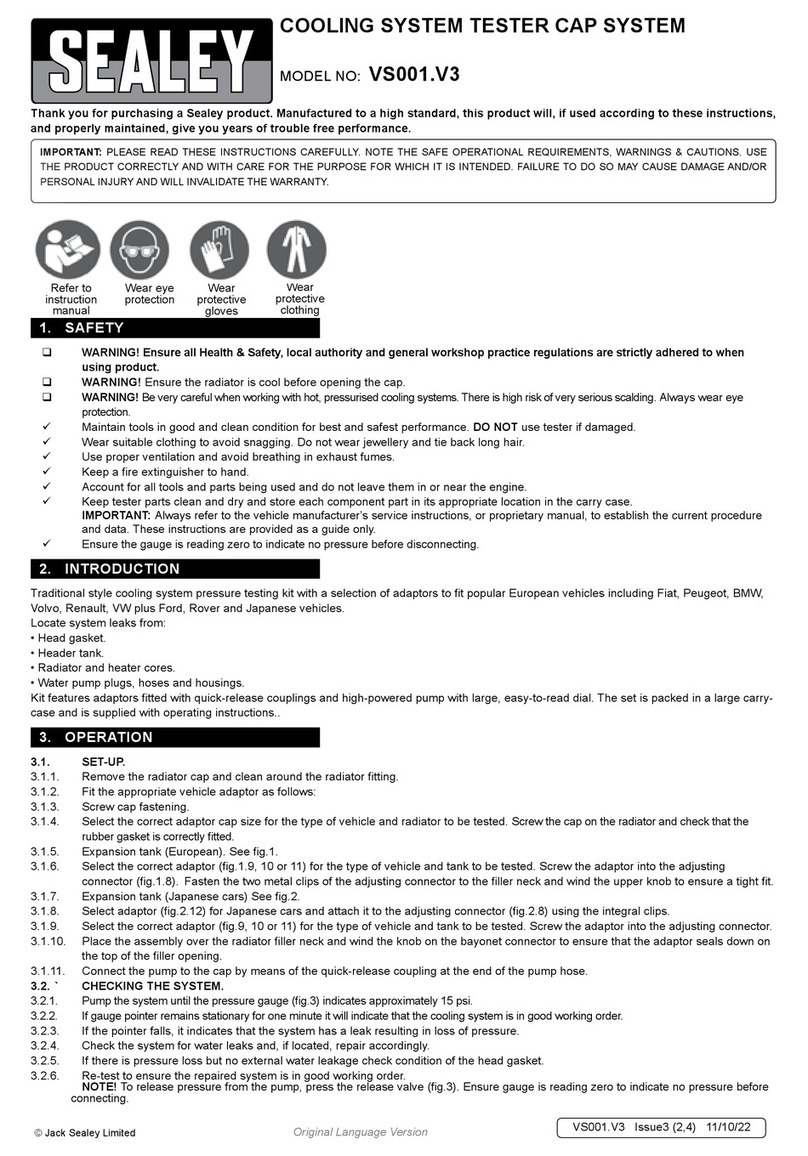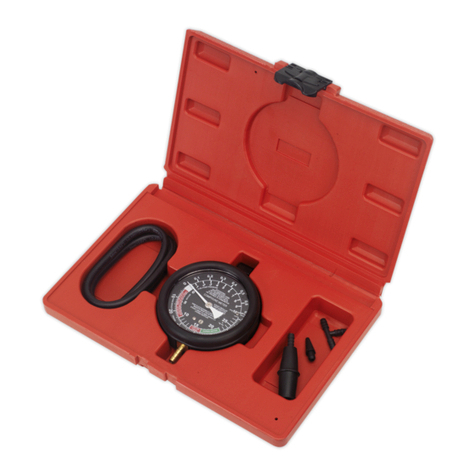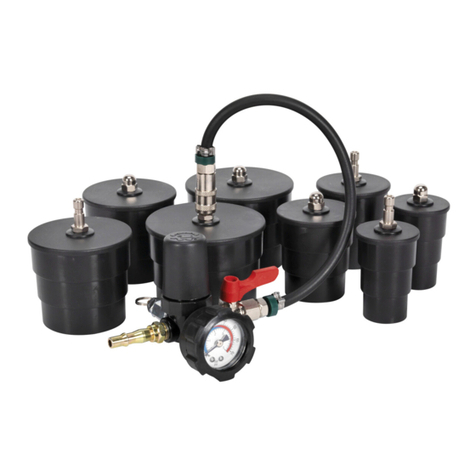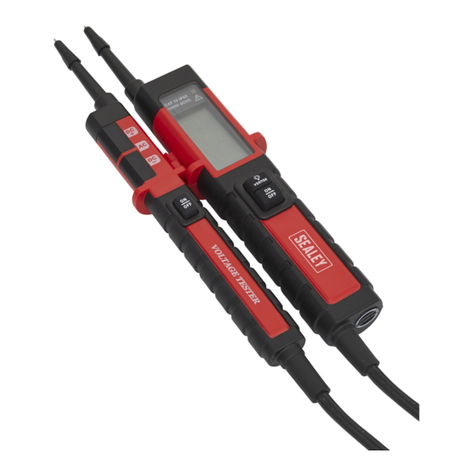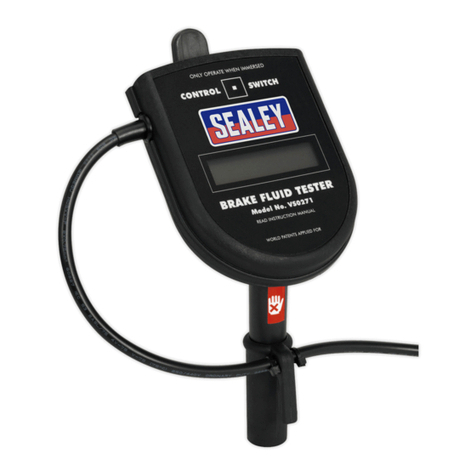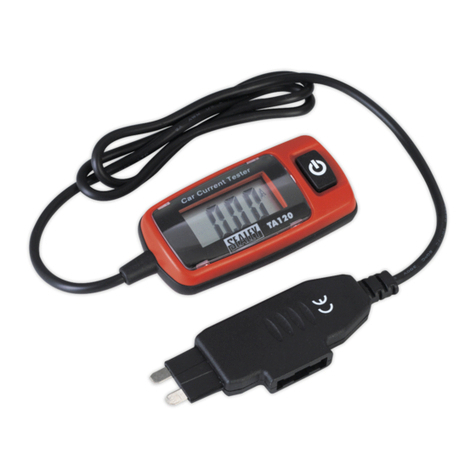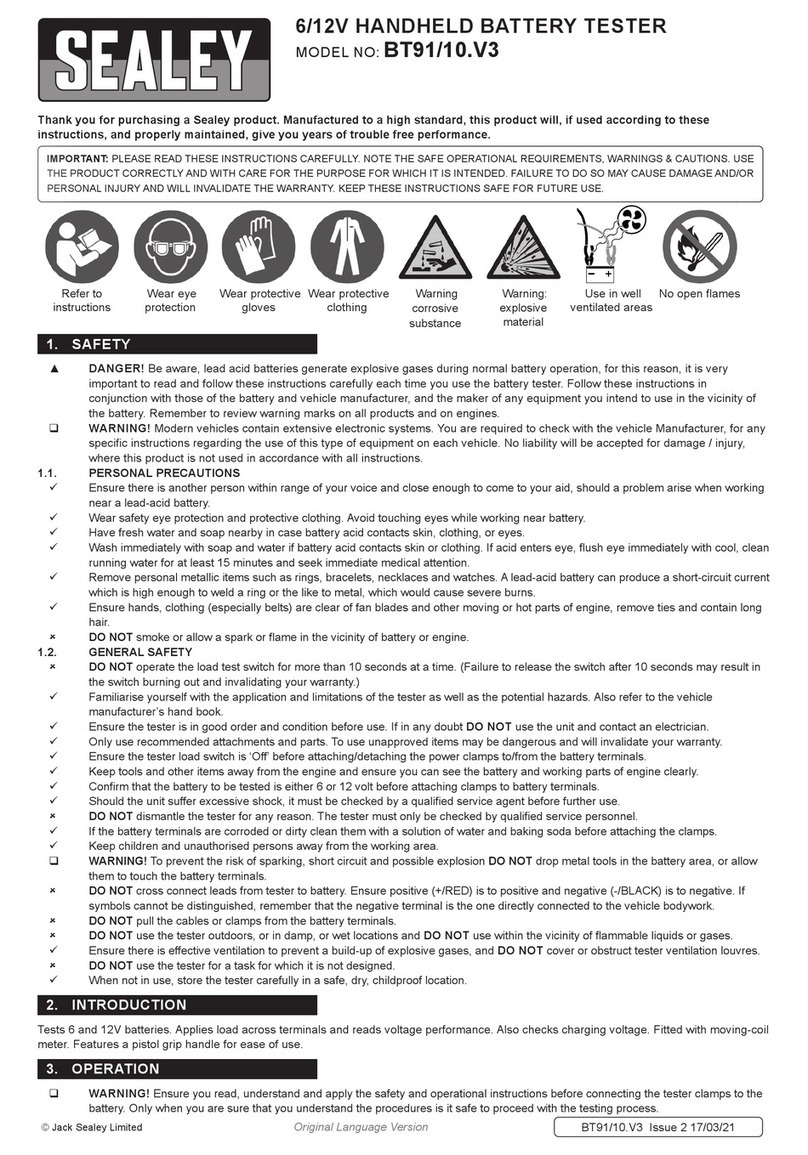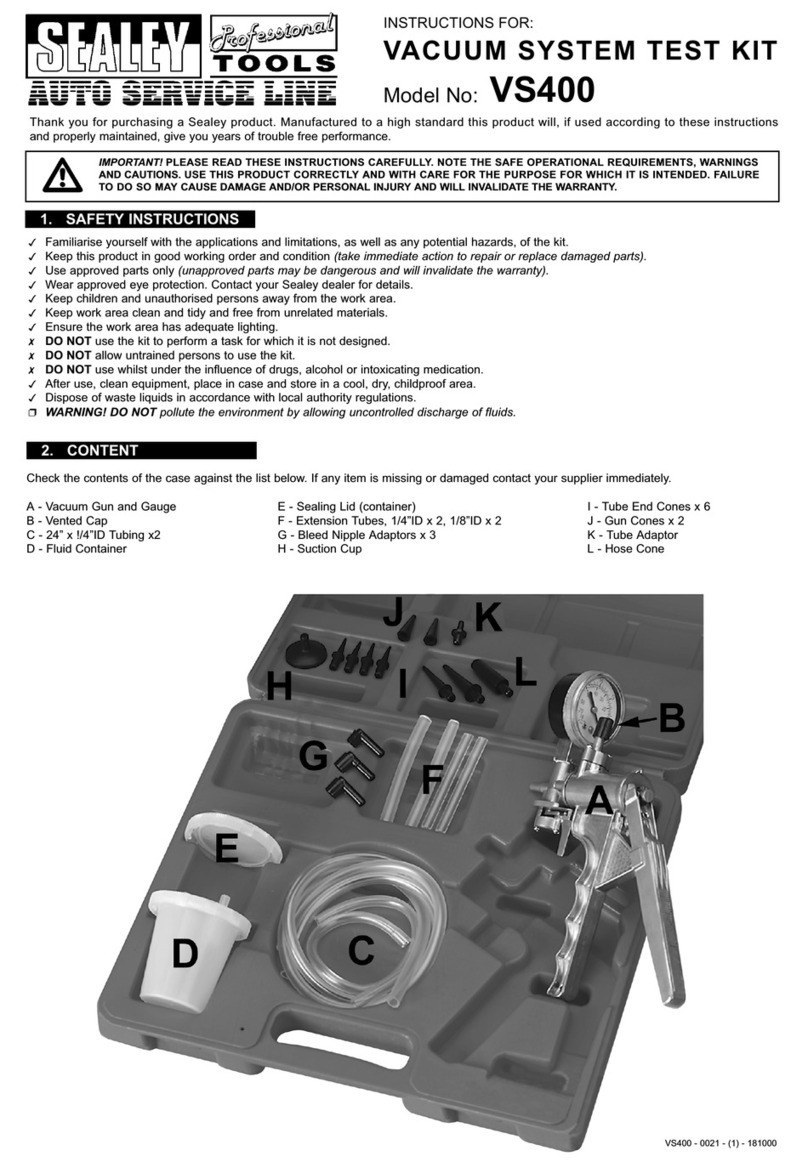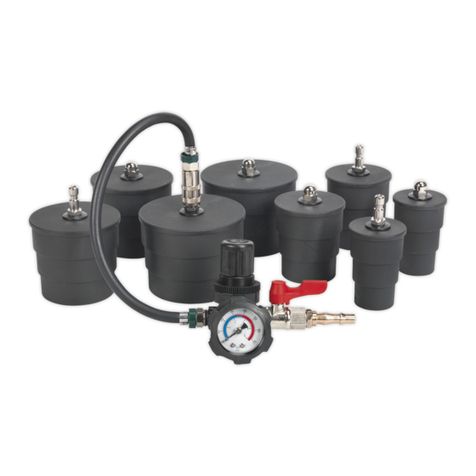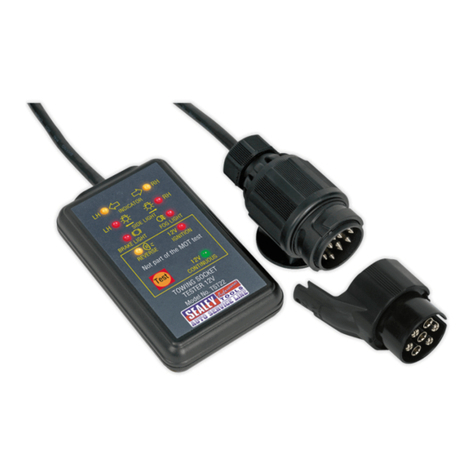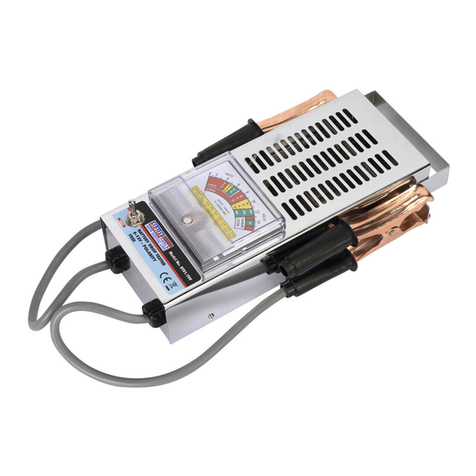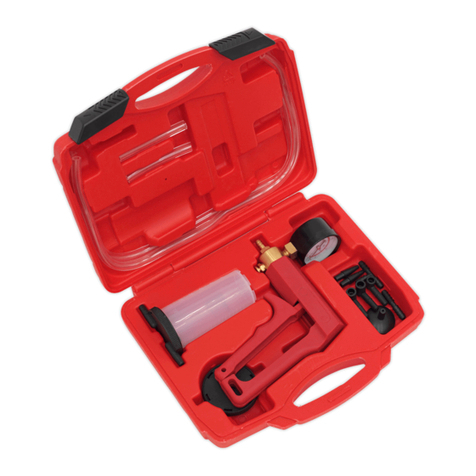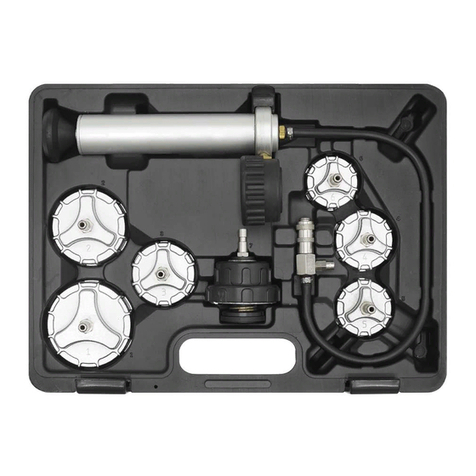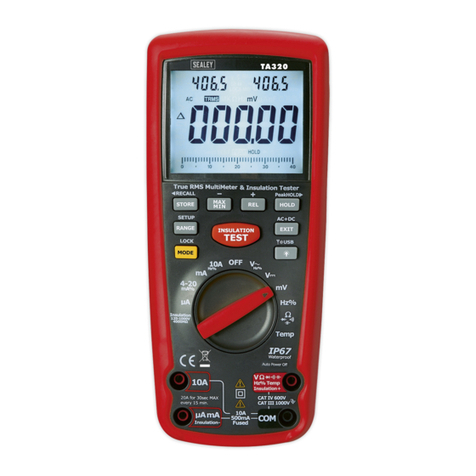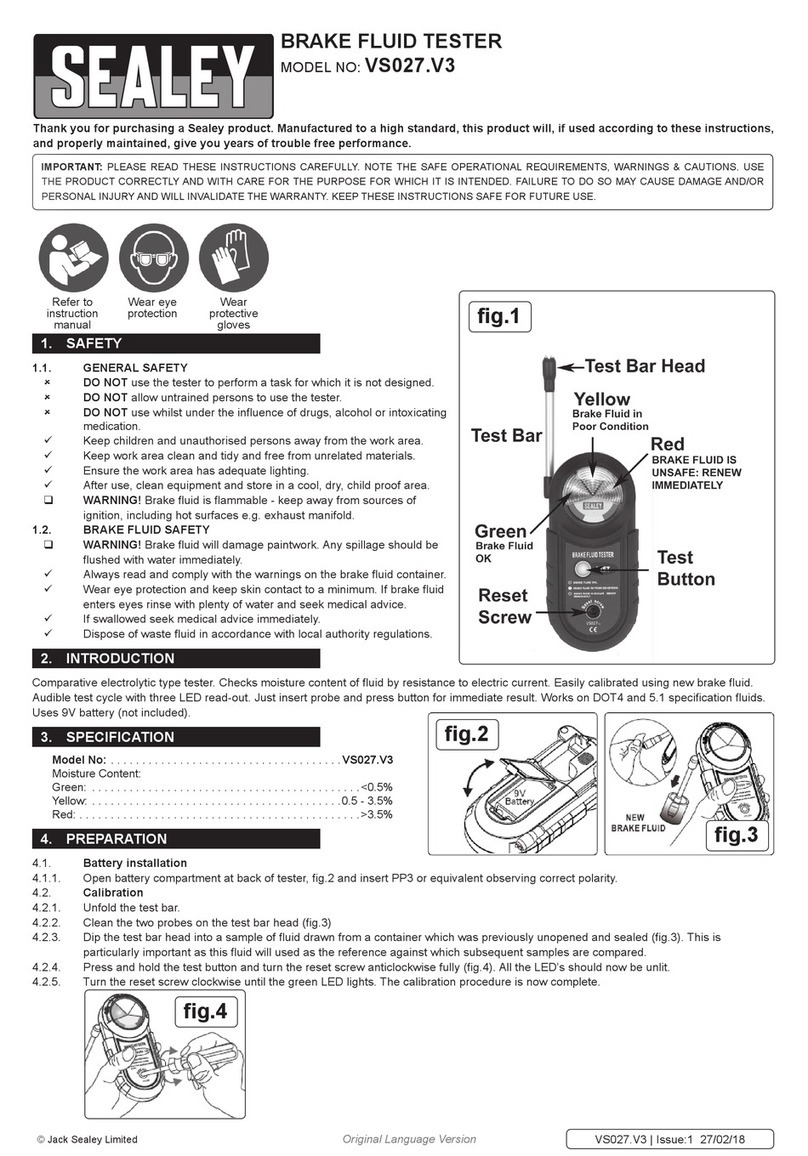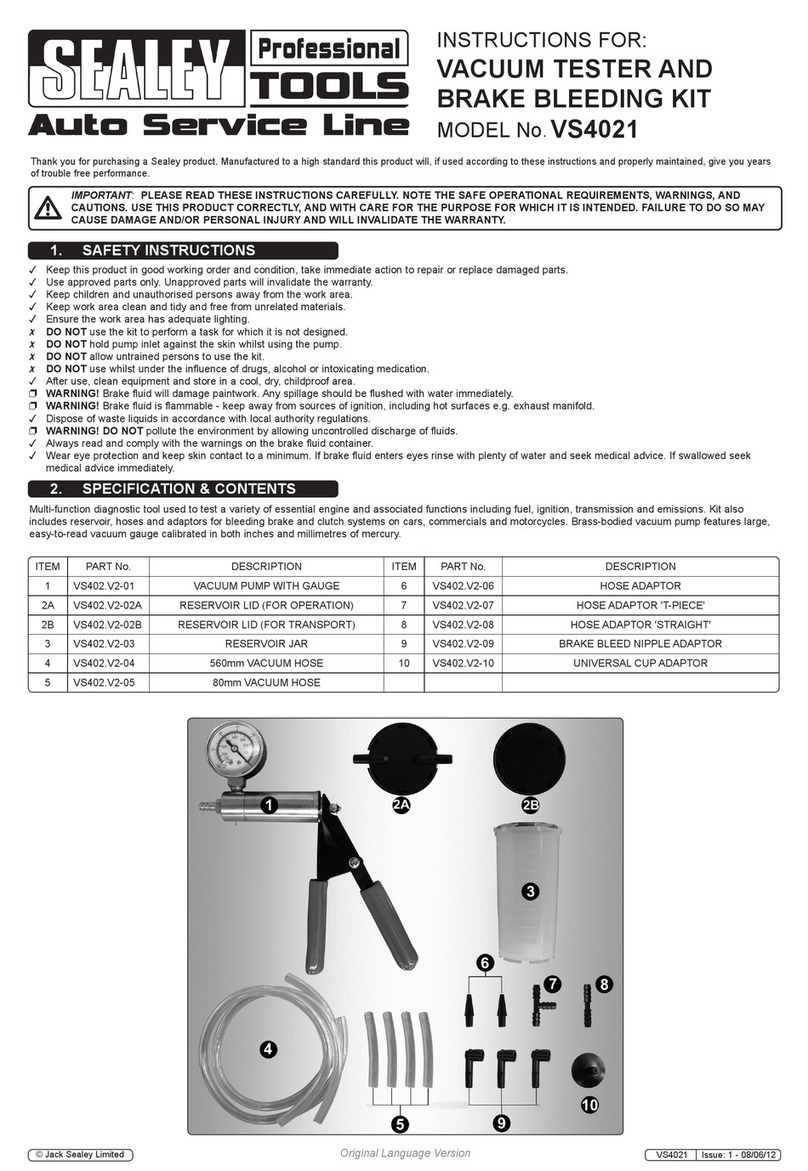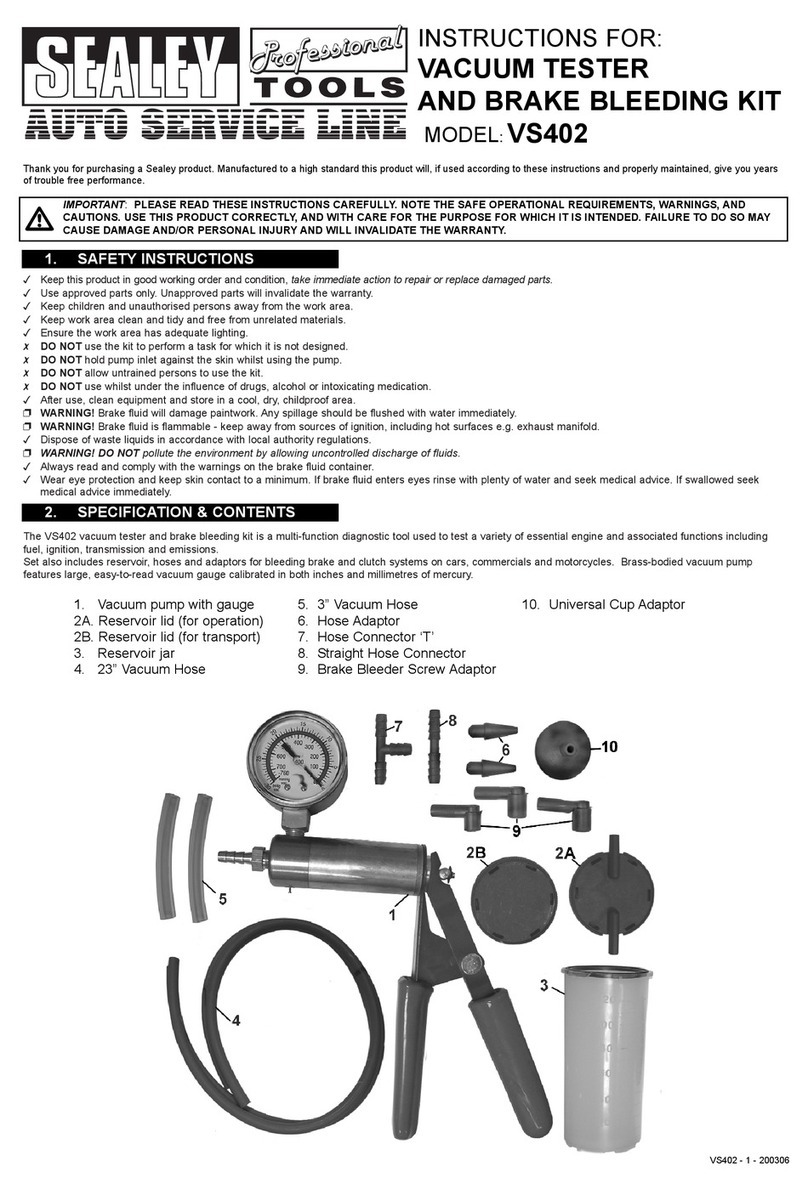
INSTRUCTIONS FOR
BATTERY TESTER 6/12V HAND HELD
MODEL NO: BT91/10
Thank you for purchasing a Sealey product. Manufactured to a high standard, this product will, if used according to these instructions,
and properly maintained, give you years of trouble free performance.
PLEASE READ THESE INSTRUCTIONS CAREFULLY. NOTE THE SAFE OPERATIONAL REQUIREMENTS, WARNINGS & CAUTIONS. USE
THE PRODUCT CORRECTLY AND WITH CARE FOR THE PURPOSE FOR WHICH IT IS INTENDED. FAILURE TO DO SO MAY CAUSE DAMAGE AND/OR
PERSONAL INJURYAND WILL INVALIDATE THE WARRANTY. KEEP THESE INSTRUCTIONS SAFE FOR FUTURE USE.
1. SAFETY
Modern vehicles contain extensive electronic systems.
YouarerequiredtocheckwiththevehicleManufacturer,foranyspecicinstructionsregardingtheuseofthistypeof
equipment on each vehicle. No liability will be accepted for damage / injury, where this product is not used in accordance
with all instructions.
1.1. PERSONAL PRECAUTIONS
9Ensure there is another person within range of your voice and close enough to come to your aid, should a problem arise when
working near a lead-acid battery.
9Wear safety eye protection and protective clothing.Avoid touching eyes while working near battery.
9Have fresh water and soap nearby in case battery acid contacts skin, clothing, or eyes.
9Wash immediately with soap and water if battery acid contacts skin or clothing. If acid enters eye, flush eye immediately with cool, clean
running water for at least 15 minutes and seek immediate medical attention.
9Remove personal metallic items such as rings, bracelets, necklaces and watches. A lead-acid battery can produce a short-circuit current
which is high enough to weld a ring or the like to metal, which would cause severe burns.
9Ensure hands, clothing (especially belts) are clear of fan blades and other moving or hot parts of engine, remove ties and contain long
hair.
8DO NOT smoke or allow a spark or flame in the vicinity of battery or engine.
1.2. GENERAL SAFETY
8DO NOT operate the load test switch for more than 10 seconds at a time. (Failure to release the switch after 10 seconds may
result in the switch burning out and invalidating your warranty.)
9Familiarise yourself with the application and limitations of the tester as well as the potential hazards.Also refer to the vehicle
manufacturer’s hand book. IF IN ANY DOUBT CONSULT AN ELECTRICIAN.
9Ensure the tester is in good order and condition before use. If in any doubt do not use the unit and contact an electrician.
9Only use recommended attachments and parts. To use unapproved items may be dangerous and will invalidate your warranty.
9Ensure the tester load switch is ‘Off’ before attaching/detaching the power clamps to/from the battery terminals.
9Keep tools and other items away from the engine and ensure you can see the battery and working parts of engine clearly.
9Confirm that the battery to be tested is either 6 or 12 volt before attaching clamps to battery terminals.
9Should the unit suffer excessive shock, it must be checked by a qualified service agent before further use.
8DO NOT dis-assemble the tester for any reason. The tester must only be checked by qualified service personnel.
9If the battery terminals are corroded or dirty clean them with a solution of water and baking soda before attaching the clamps.
9Keep children and unauthorised persons away from the working area.
WARNING! To prevent the risk of sparking, short circuit and possible explosion DO NOT drop metal tools in the battery area, or allow them to
touch the battery terminals.
8DO NOT cross connect leads from tester to battery. Ensure positive (+/RED) is to positive and negative (-/BLACK) is to
negative. If symbols cannot be distinguished, remember that the negative terminal is the one directly connected to the vehicle
bodywork.
8DO NOT pull the cables or clamps from the battery terminals.
8DO NOT use the tester outdoors, or in damp, or wet locations and DO NOT use within the vicinity of flammable liquids or gases.
9Ensure there is effective ventilation to prevent a build-up of explosive gases, and do not cover or obstruct tester ventilation louvres.
8DO NOT use the tester for a task for which it is not designed.
9When not in use, store the tester carefully in a safe, dry, childproof location.
Original Language Version
© Jack Sealey Limited
Danger! Be aware, lead acid batteries generate explosive gases during normal battery operation, for
this reason, it is very important to read and follow these instructions carefully each time you use
the battery tester.
Follow these instructions in conjunction with those of the battery and vehicle manufacturer, and the maker of any equipment you intend to use in
the vicinity of the battery. Remember to review warning marks on all products and on engines.
Refer to
instruction
manual
Wear eye
protection Explosive
material Corrosive
material Use in a well
ventilated area Wear
protective
gloves
BT91/10 | Issue 3(L) 07/02/17
